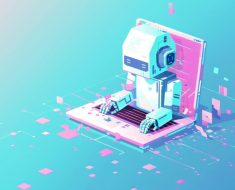AGI vs. AI
So, what’s the difference between AGI and the AI we have now? Think of generative AI models like specialized keys, each designed to unlock a specific door (or several). They excel within the niches for which they’re trained. However, generative AI cannot transcend boundaries without extensive retraining or redesign.
On the other hand, AGI is like a master key capable of unlocking many new doors. It aims for flexibility and generalization not seen in today’s AI. Unlike traditional AI that might require specific inputs and training for each new task, AGI can learn and adapt to new challenges autonomously.
While some fear the potential risks that come with AGI, other experts believe that AGI could benefit humanity. AGI’s enhanced decision-making and ability to apply intelligence to a wider range of human tasks could be used to find new approaches to existential threats like climate change, disease, and world hunger. AGI may even take us beyond our planet by unlocking the doors to space exploration; it could help us develop interstellar technology and identify and terraform potentially habitable exoplanets. It might even shed light on the origins of life and the universe.
Microsoft and OpenAI’s commitment to AGI
Microsoft and OpenAI are working to create AGI that can multiply the ways AI can improve our lives. This collaborative endeavor is grounded in a commitment to safe and 3 responsible AGI implementation as well as a focus on addressing global issues such as climate change and healthcare.
While AGI has yet to be created, current generative AI models like Copilot have already opened new doors. Be a part of the great journey by trying the AI companion today.



